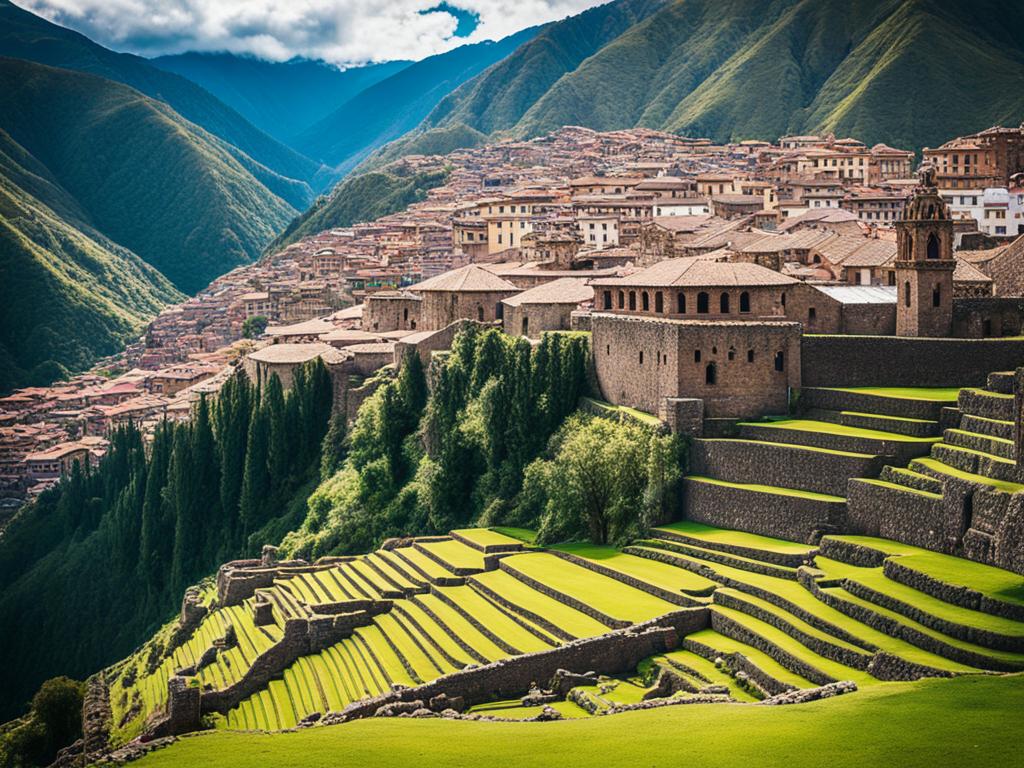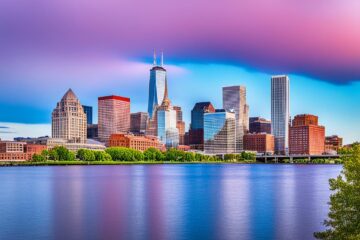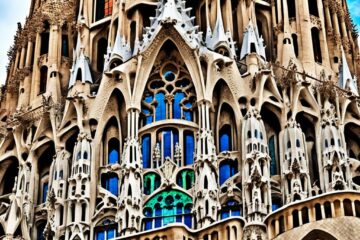When you arrive in Cusco, the ancient Inca Empire’s capital, you feel the past everywhere. The city’s cobblestone streets and giant stone walls hint at a time when the Incas controlled much of South America. They tell stories of a rich culture, encouraging visitors to explore Inca mysteries and the lasting traditions of the Quechua people.
Cusco is located in the grand Peruvian Andes and is your entryway to Machu Picchu. Known as a New Wonder of the World, Machu Picchu is a must-see site. Cusco also marks the beginning of the Inca Trail, a famous path that leads hikers to Peru’s archaeological treasures and natural beauty. Here, the Inca legacy shines in the city’s structures and the spirit of its people.
Key Takeaways
- Cusco, the ancient Inca capital, is a city steeped in history and cultural richness.
- Explore the mysteries of the Inca Empire and immerse in the vibrant Quechua traditions.
- Cusco is the gateway to the iconic Machu Picchu and the starting point for the legendary Inca Trail.
- Discover the architectural wonders of the Inca civilization, including the Qorikancha and Sacsayhuaman.
- Experience the vibrant heart of Cusco, including the Plaza de Armas and local markets.
Unraveling the Mysteries of Cusco
Cusco’s history is a fascinating mix of Inca traditions and Spanish conquest. It was the heart of the Inca Empire, located in the Peruvian Andes. Today, it has many well-preserved archaeological sites and beautiful architecture. These show the Incan culture’s greatness, from detailed stonework to ancient palaces.
A Historical Gem in the Peruvian Andes
In the Peruvian Andes, Cusco stands as a living Inca history book. Its archaeological sites and buildings are a museum of the Inca civilization. Visitors can learn about the Inca’s advanced building skills and their rich culture.
Exploring the Incan Legacy
The Incan Ruins in Cusco highlight the Inca people’s genius in construction. From the sturdy stonework to the ruins of their palaces, these sites are awe-inspiring. They show the Inca achievements in engineering and their once-dominant presence.
Cusco’s Enduring Quechua Culture
Cusco also showcases the lasting Quechua Culture besides the Incan Ruins. The Quechua people have kept their traditional ways, welcoming visitors to share in their culture. Visitors can see and buy traditional crafts, enjoy music, and dances. This displays the strength and creativity of the Quechua culture.
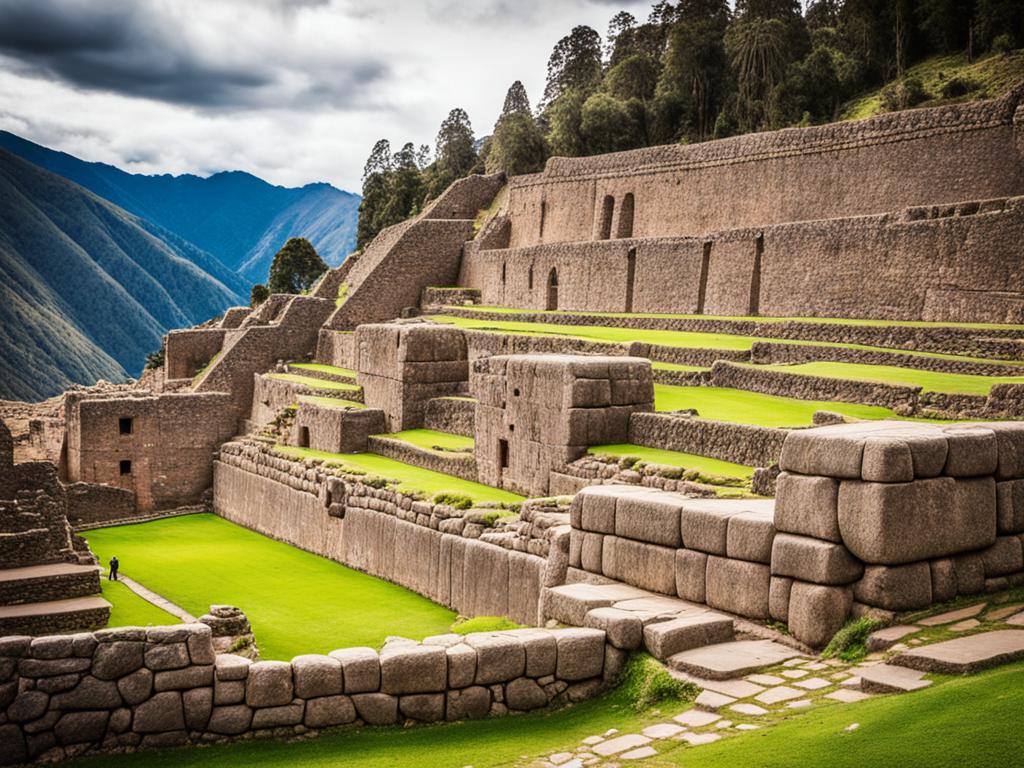
Cusco: Gateway to Machu Picchu
Cusco is the starting point for the Inca Trail and leads to Machu Picchu, a New Seven Wonder. Trekkers find this route thrilling but demanding as they cross the Peruvian Andes. This experience allows them to enjoy nature and learn from history before reaching Machu Picchu’s grand archaeological sites.
Embarking on the Inca Trail
The famous Inca Trail takes hikers through the beautiful Peruvian Andes. This path lets adventurers explore the core of the Inca Empire. They walk on ancient paths, seeing amazing views of mountains, green valleys, and old Incan cities.
The Awe-Inspiring Citadel of Machu Picchu
Arriving at Machu Picchu is the highlight for those who brave the Inca Trail. This Incan ruin is up in the Peruvian Andes. When the clouds clear, the city appears, impressing all with Incan ingenuity. They built this iconic city on a high mountain long ago.
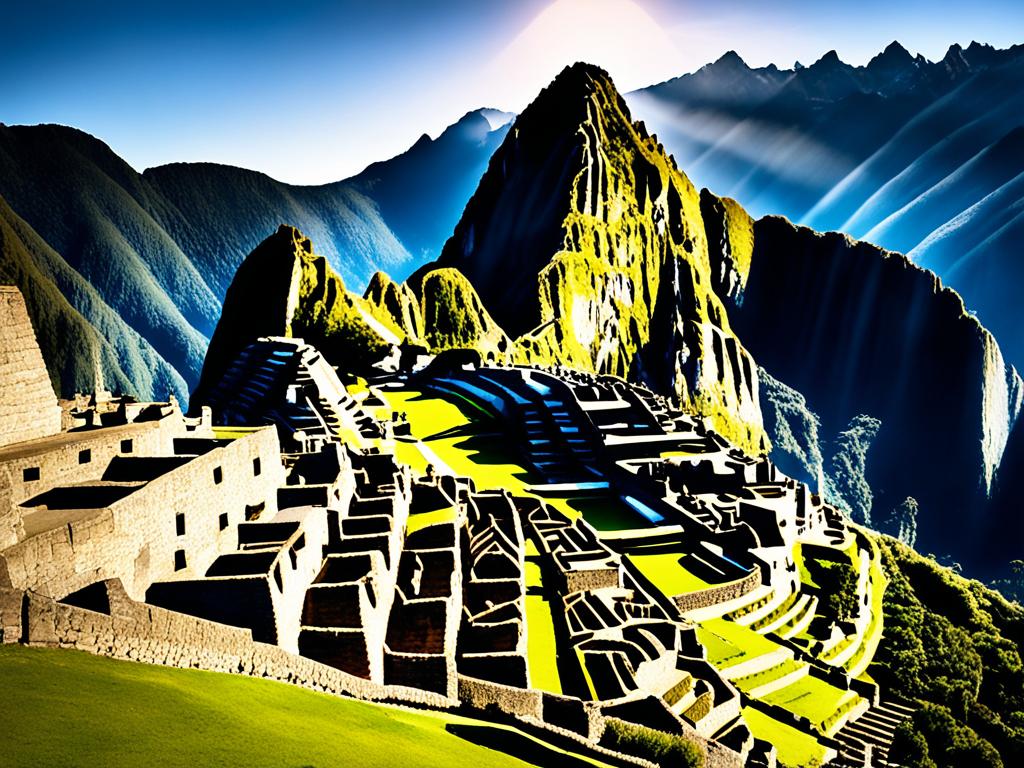
Architectural Wonders of the Incan Empire
Cusco’s buildings are a living legacy of Incan skills and creativity. They shaped the city’s look in a lasting way. An outstanding structure is the Qorikancha, meaning Sun Temple. It was a spiritual and political hub for the Inca Empire. The temple blends detailed stonework with complex engineering. It gives a picture of the Incan people’s deep connection with nature and their advanced construction methods.
The Qorikancha: Sun Temple of Cusco
The Qorikancha, once plated in gold, was the center of Incan sun worship. It held priceless sacred items and shrines. Although the gold is gone, the ruins still impress with their superb stone fits and intricate carvings. These features keep tourists amazed, highlighting the Inca’s architectural excellence and spiritual beliefs.
Sacsayhuaman: A Fortress of Marvel
Sitting high above Cusco, Sacsayhuaman is an awe-inspiring Incan fortress. Its grand stone walls and terraces made it a mighty stronghold and a religious place. The builders’ ability to place stones weighing over 300 tons perfectly shows their skill. It also reflects their profound respect for nature.
Exploring the Vibrant Heart of Cusco
The captivating Plaza de Armas stands at Cusco’s heart. It’s a lively public square, surrounded by stunning colonial buildings like the Cathedral of Cusco. The square is always busy with daily life activities, inviting visitors to experience Cusco’s culture.
The Plaza de Armas: Cusco’s Living Museum
At the Plaza de Armas, the atmosphere is filled with Quechua culture. Local people sell their arts and crafts, while performers and musicians add to the scene. It’s a great place to see Inca stonework and Colonial architecture, mixed with modern life. This blend has been Cusco’s charm for a long time.
Culinary Delights and Local Markets
Move beyond the Plaza de Armas to Cusco’s local markets for a real treat. Mercado San Pedro is bursting with fresh Peruvian food and unique spices. The artisanal Mercado de Artesanía showcases intricate crafts, showing the talents of the people here.
Here, you can try Cusco’s famous ceviche or find the perfect handmade keepsake. The markets celebrate Quechua culture and Cusco’s deep heritage.
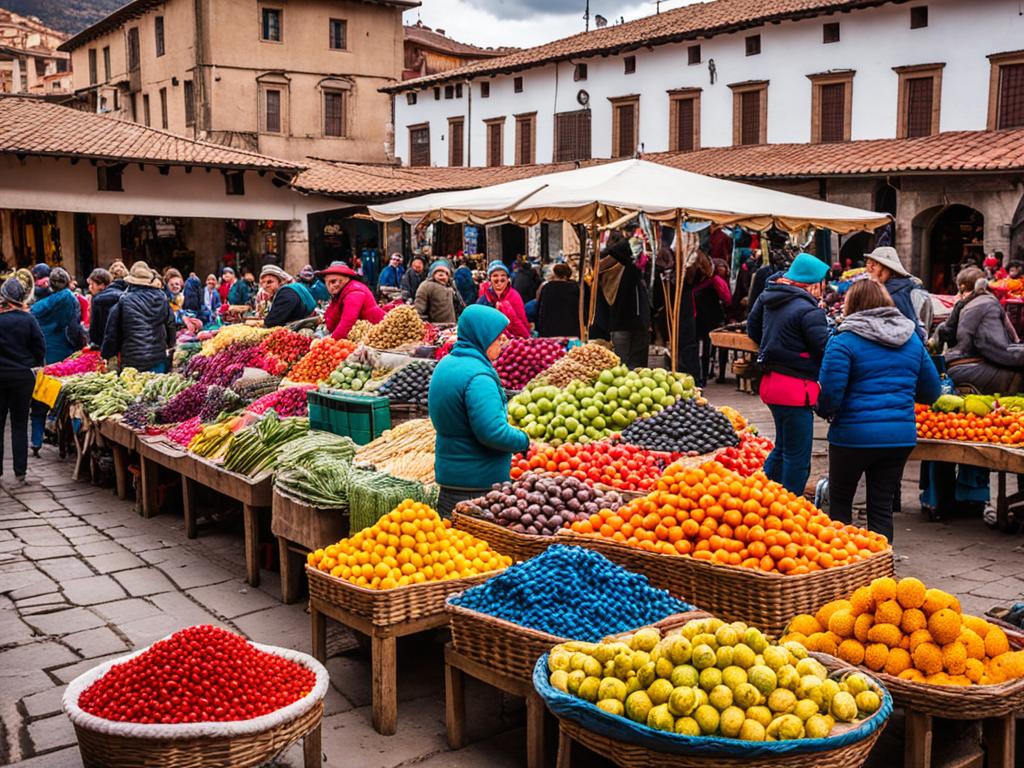
Conclusion
Cusco, the previous Inca capital, is a city of beauty and impact. Anyone who visits falls in love with it. You’ll see amazing historical sites, beautiful architecture, the lively Quechua culture, and exciting foods. Cusco is the perfect place to start exploring Peru’s history. It leads to must-see places like Machu Picchu and the famous Inca Trail. Traveling from Cusco lets you experience the Peruvian Andes and learn about the Inca people’s amazing culture.
The city has incredible historical sites and buildings, like Qorikancha and Sacsayhuaman. They show the greatness of the Inca Empire. Cusco is also known for its lively Quechua culture and the busy Plaza de Armas. These reflect the deep traditions and everyday life of this interesting city. By visiting Cusco, you can have an unforgettable trip through the Peruvian Andes. You’ll dive into its history and experience its natural beauty.
If you’re interested in ancient spots, cultural events, or beautiful nature, Cusco is the place for you. It promises a trip you won’t forget. When you visit this ancient Inca capital, you realize it’s a special place. It keeps pulling in and inspiring everyone who comes.
